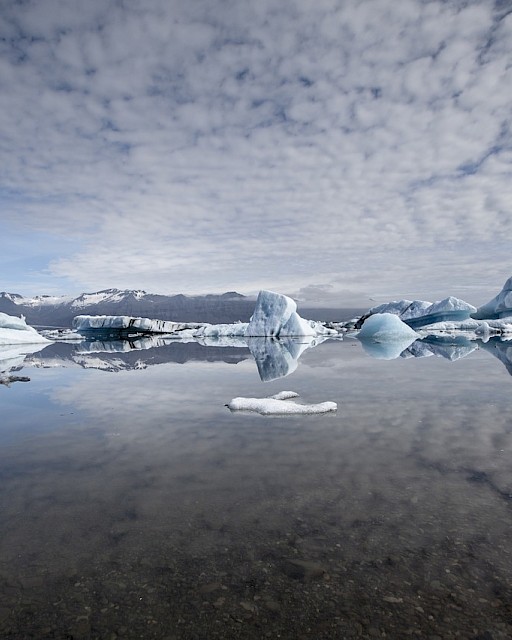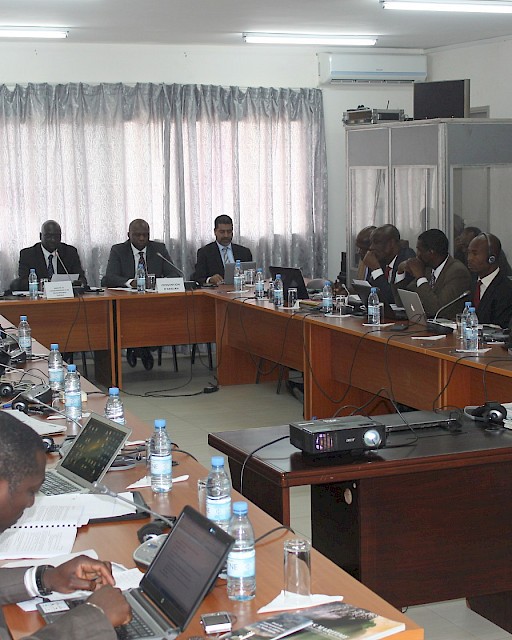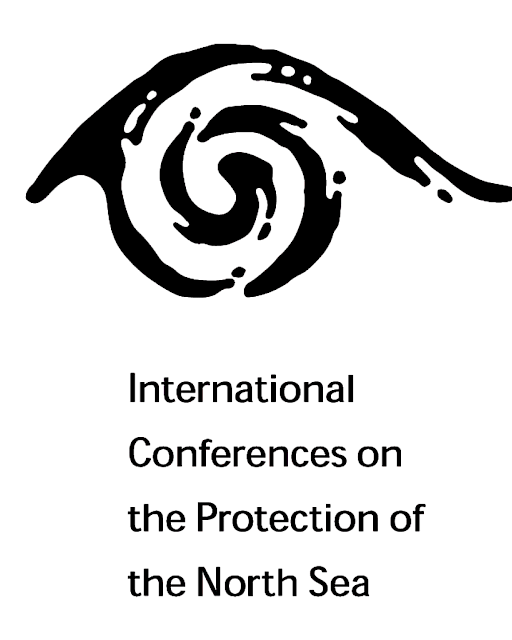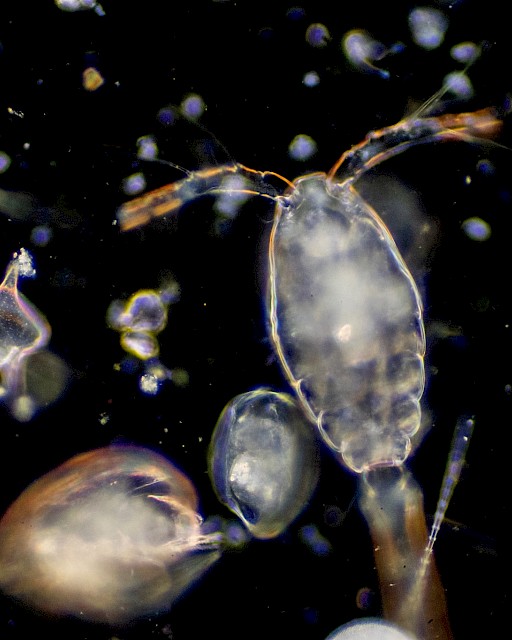Collective Arrangement
The ‘Collective Arrangement between competent international organisations on cooperation and coordination regarding selected areas in areas beyond national jurisdiction in the North-East Atlantic’ (Collective Arrangement, OSPAR Agreement 2014-09) adopted in 2014 by the Convention for the Protection of the Marine Environment of the North-East Atlantic (OSPAR) and the North-East Atlantic Fisheries Commission (NEAFC) is a formal agreement between legally competent authorities managing human activities in the Areas Beyond National Jurisdiction (ABNJ) in the North-East Atlantic.
The essential aim of the Collective Arrangement is to become a collective and multilateral forum composed of all competent entities addressing the management of human activities in this region. Thus, it differs significantly from the bilateral Memorandum of Understanding (MoU) agreed between OSPAR and NEAFC in 2008 as it aims at a wider participation of all competent organisations and bodies in order to ensure a multilateral dialogue and collaborative work in the future.
The foremost objective of the Collective Arrangement is to facilitate cooperation and coordination on area-based management between legally competent authorities, promoting the exchange of information on each other’s activities and achievements and taking into consideration all conservation and management measures taken in relation to the North-East Atlantic. In addition to keeping under review a joint record of areas subject to specific measures and informing each other of any modification of existing measures or any new measures or decisions, the competent authorities have an opportunity to discuss subjects of common interest and concern.
From the OSPAR perspective, the aim of institutional cooperation is to help deliver an ecosystem approach to the management of all relevant human activities in the marine environment. The objectives of NEAFC in adopting measures to protect the marine ecosystem from the potential adverse impacts of fisheries are of great interest to OSPAR in the context of protective, restorative and precautionary measures aiming at protecting and conserving species, habitats and ecosystems of the North-East Atlantic marine environment.
For NEAFC, cooperation can also highlight measures within the broader ecosystem that OSPAR can take within its competence to support NEAFC’s objective to ensure the long-term conservation and optimum utilisation of fishery resources, providing sustainable economic, environmental and social benefits.
The need for a Collective Arrangement in the North-East Atlantic
The initially informal relationship between OSPAR and NEAFC’s Secretariats allowed a reciprocal understanding of each organisation’s work and led to an aim to enlarge the scope of cooperation. In 2008 this relationship evolved into a Memorandum of Understanding which states the complementary competences of both organisations, including in ABNJ, and also allows for a reciprocal participation in each other’s relevant committees.
Policy coherence is also one of the key drivers for NEAFC and OSPAR to work together, enabling common Contracting Parties to better align their activities under both conventions. The process of working, for instance, on protective measures on marine protected areas and the Collective Arrangement, have been beneficial, not only in dealing with policy coherence between the two organisations, but also in driving better coordination at the national/ministry level in the Contracting Parties common to both organisations.
However, NEAFC and OSPAR are neither the only international organisations with legal competence relevant to the ABNJ in the North-East Atlantic nor do they have the exclusive legal competency on human activities impacting on the marine environment of the North-East Atlantic. A widening process was initiated in 2010 to seek for the participation of other competent authorities to join in efforts to cooperate and coordinate.
The process resulted in the Collective Arrangement between competent authorities in ABNJ in the North-East Atlantic. To date the Collective Arrangement has been adopted by NEAFC and OSPAR. There are continued discussions to bring additional organisations into the Collective Arrangement which, to date, have not yet been formalised. The secretariats of other intergovernmental organisations and bodies that are invited to join meetings under the Collective Arrangement include, e.g., the International Seabed Authority (ISA), the International Maritime Organization (IMO), the International Council for the Exploration of the Sea (ICES), the International Whaling Commission (IWC), the UN Food and Agriculture Organization (FAO), the UN Environment Programme (UNEP), the Convention on Biological Diversity (CBD), the Arctic Council, and the International Commission for the Conservation of Atlantic Tunas (ICCAT).
Acting within their own fields of competence, OSPAR and NEAFC’s collaboration is an example of a regional platform to address matters relating to the oceans protection and the sustainable use of the marine environment. A joint commitment has been submitted under target 4.c of Sustainable Development Goal (SDG) 14 through which both Secretariats committed to further promote the Collective Arrangement and widen its collaborative scope with the secretariats of other intergovernmental organisations and bodies in other regions and sectors.
In 2015, UNEP asked the Secretariats of NEAFC and OSPAR to prepare an information paper to describe an overview of the process that led to this cooperative mechanism, from first contact to the implementation of the Collective Arrangement. The purpose of the paper has been to document the experience so far and to share this with other Regions. The paper, which was written by Stefan Ásmundsson and Emily Corcoran, was launched at the 2nd meeting under the Collective Arrangement that took place in April 2016. You can view the document here.
Joint narrative to enhance protection of the North-East Atlantic
In November 2024, the OSPAR Commission and NEAFC adopted a joint narrative that:
- highlights how existing complementary measures adopted by NEAFC and OSPAR contribute towards the protection and conservation of marine biodiversity and ecosystems in ABNJ of the North-East Atlantic; and
- sets the basis to further develop cooperation between the two organisations on area-based management measures.
One of the main outcomes of the joint narrative is the identification of collaborative actions that can help ensure a more comprehensive and coherent network of area-based management measures in the North-East Atlantic:
- OSPAR can determine the conservation objectives and measures that are needed to protect biodiversity in certain areas (MPAs). It can draw relevant issues to the attention of NEAFC to identify and implement appropriate fisheries measures where necessary to deliver these conservation objectives; and
- NEAFC can set out fisheries measures which deliver conservation benefits, in particular area-based fisheries measures (OECM). OSPAR can complement NEAFC’s OECM by providing measures under its competence in the same areas and in providing relevant biodiversity and environmental data to NEAFC’s scientific advisor, ICES.
Combined, these actions can help enhance NEAFC’s and OSPAR’s shared objectives to protect the marine environment.
You can view the joint narrative here.
Collective Arrangement meetings summaries
You can view the summaries of the discussions from the Collective Arrangement meetings in OSPAR’s meeting archive here.





